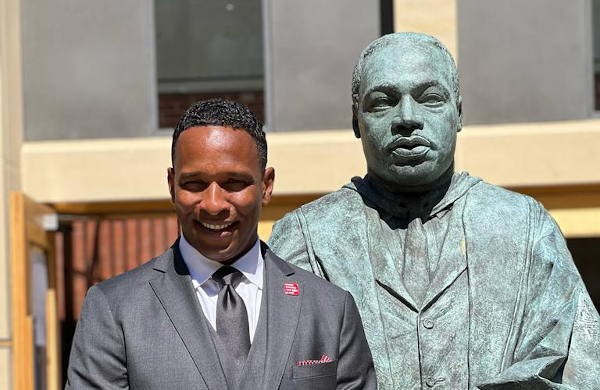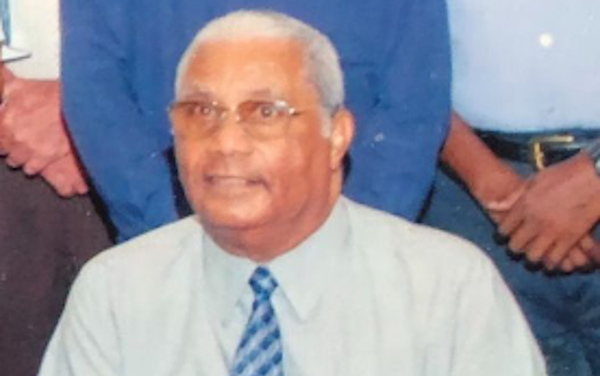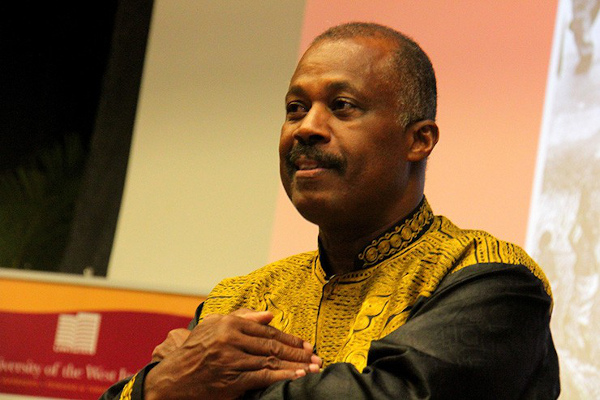“[…] For 1950s’ audiences in Trinidad and Tobago, seeing Sidney Poitier on screen in significant roles was a revelation. This was no longer Hattie McDaniel and Butterfly McQueen of Gone with the Wind, Stepin’ Fetchit of so many stereotyped portrayals of the black buffoon or the walk-on appearances by black singing and dancing groups in the odd MGM or RKO musical.
“Even if he and we still operated within the constructs of white European and American value systems, this was still a young, black male with substantial presence, providing an onscreen companion piece to the exploits of a winning West Indian cricket team in England, the triumphs of Joe Louis, Sugar Ray Robinson and other black boxing legends, the new frontiers in football led by Pele and the Brazilian football team, and the socio-political currents of regional nationalist movements that would lead ultimately to Independence for most of the English-speaking West Indian islands by the end of the 1960s…”
The following Letter to the Editor on the legacy of iconic late actor Sir Sidney Poitier, the first black person to win an Oscar, was submitted to Wired868 by Ken Jaikaransingh of Maraval:

(Copyright Paramount/ Allstar)
I very rarely comment on events in the lives of pop stars, Hollywood actors and other celebrities. They live very different lives from the rest of us. Many of us have a curious fascination with people we shall never meet, and whom we see only via television or cinema screen but have come to believe we are their very intimate friends.
But I make an exception to write about the late Sir Sidney Poitier, who passed away earlier this week. This is probably because I grew up alongside and with the films of this remarkable actor and human being and can chart significant events in my own life next to episodes in his life and career.
To me, his passing has felt like the loss of a distant relative on some foreign shore, one that I had never met but whose life experiences I had come to share vicariously through others.
The very first Sidney Poitier movie I remember seeing, probably at a 12.30pm matinee at the Strand Cinema when I was about 10 years old, was one called Mark of the Hawk, in which he appeared alongside Eartha Kitt.

The movie was a drama about a love affair between a black man and a blind white girl.
(Copyright MGM Studios/ Getty Images)
That, however, was not his first significant screen appearance; that had come as early as 1950 when he played a young, black doctor who must suffer horrible racial abuse from an injured criminal, played by Richard Widmark (in real life one of Poitier’s good friends with whom he would make two other movies) in a tense message film called No Way Out.
In the 1950s and early 1960s, Poitier would make several of these message films: The Defiant Ones, for example, where he was an escaped prisoner shackled to another racist escapee, played by Tony Curtis, Edge of the City, where he was John Cassavetes’ self-sacrificing buddy, and A Patch of Blue, in which he became emotionally involved with a blind, white girl.
In a few films in between, however, Poitier was allowed room in roles that captured some of the angst of black people both in the United States and globally. Cry the Beloved Country, made in 1951, saw him as a young, idealistic, black priest combating racism in South Africa.
There were other films like Something of Value, in which the childhood friendship he had had with the Rock Hudson character appears to evaporate in the turmoil of the Mau uprising in Kenya.

(Copyright Francis Miller/ The LIFE Picture Collection/ Getty Images)
In these films, however, the rebellious Poitier character would either come to an unfortunate end or redeem himself in society’s eyes by, say, saving Glenn Ford from hoodlums in Blackboard Jungle or Clark Gable from a Union prison in Band of Angels.
In Mark of the Hawk, he was an African activist seeking racial equality via peaceful means. In 1961 he would reprise on film the key role of Walter Younger, which he had played on Broadway in Lorraine Hansberry’s celebrated drama, A Raisin in the Sun.
For 1950s’ audiences in Trinidad and Tobago, seeing Poitier on screen in significant roles was a revelation. This was no longer Hattie McDaniel and Butterfly McQueen of Gone with the Wind, Stepin’ Fetchit of so many stereotyped portrayals of the black buffoon or the walk-on appearances by black singing and dancing groups in the odd MGM or RKO musical.
Even if he and we still operated within the constructs of white European and American value systems, this was still a young, black male with substantial presence, providing an onscreen companion piece to the exploits of a winning West Indian cricket team in England, the triumphs of Joe Louis, Sugar Ray Robinson and other black boxing legends, the new frontiers in football led by Pele and the Brazilian football team, and the socio-political currents of regional nationalist movements that would lead ultimately to Independence for most of the English-speaking West Indian islands by the end of the 1960s.

In a handful of his films, the colour of the Poitier character seemed secondary to the humanity of the part he played. Such a film was The Slender Thread, in which he was a volunteer handling a help line for would-be suicides; he becomes the fragile lifeline for an intended suicide (Anne Bancroft) whom he never actually meets. But this movie and others like it would appear after his lead role as the itinerant but multi-skilled Homer Smith, who helps a group of refugee German-speaking nuns build a chapel in the Arizona desert.
Lilies of the Field, made on a shoestring budget in 1963, remains one of the most endearing and uplifting landmarks in American cinema, and Sidney Poitier would become the first black American male to win an Academy Award as Best Actor.
By the mid-1960s, however, Poitier, who had marched with Martin Luther King in the latter’s Civil Rights campaign, had fallen out of favour with the growing militant mood of black America encapsulated by Stokely Carmichael, Malcolm X, H Rap Brown and the Black Panther Movement.
In their eyes, Poitier was playing versions of the black experience sanitised for white audiences, none so prominent as the black super-hero doctor planning to marry a white girl he played in Guess Who’s Coming to Dinner.

(Copyright MGM/ Allstar)
The Poitier screen image was too bland and asexual, and Guess Who’s Coming to Dinner was the last sugar-coated pill they proclaimed themselves able to swallow.
In Trinidad equally, Poitier’s stocks diminished; black audiences turned to Fred Williamson, Jim Brown and Pam Grier, kicking back forcefully at the dominant white culture that repressed them.
Ironically, however, in 1967, the very year of GWCTD, he would play two more iconic roles, in both of which the fact that his character was black was central to the story. The first of these was To Sir with Love, where he played a black teacher from the Caribbean confronted by a troubled multi-ethnic group of East London teenagers.
The second was In the Heat of the Night, in which his black detective Virgil Tibbs slaps a powerful white landowner after being reluctantly co-opted into investigating a murder by the redneck sheriff of the Southern town of Sparta.
It was a scene that created considerable controversy in the racist enclaves of the United States at the time. Even the black butler serving lemonade in the film is horrified.

The film was a thriller about a detective from Philadelphia who gets involved in a murder case in Mississippi.
(Copyright United Artists/ Allstar)
For a while, smarting from the criticism of his black critics, Poitier made films that were purely commercial in intent, like sequels to In the Heat of the Night featuring the Tibbs character, the western Duel in Diablo, the escapist adventure The Long Ships and the anti-Cold War statement, The Bedford Incident. But from 1970 onwards, Poitier turned to directing in addition to acting, making movies which quietly but significantly recognised the black presence and black audiences in the USA.
When romantic fare like For Love of Ivy and A Warm December, featuring Jamaican actress Esther Anderson, failed at the box office, Poitier turned to comedy. Several were made with personal friends like Harry Belafonte, Bill Cosby and other leading black talents.
Movie-goers of all hues responded positively to Buck and the Preacher, Uptown Saturday Night and Let’s Do It Again. In 1980, one of them, Stir Crazy, which he only directed, became the highest grossing film made by a black director up to that time.

When they appeared locally, the comedies would play to sell-out crowds at the Empire Cinema on Frederick Street. On local television, comedies in a similar vein like Love Thy Neighbour, a series that lampooned race relations in the UK, and featured Trinidad and Tobago’s Rudolph Walker among the leads, had begun to appear and were immensely popular.
This was the era in which situation comedies featuring black characters also began appearing on American television: Sanford and Son, Good Times, The Jeffersons, all played at prime time on US networks and locally.
In the late 1980s, Poitier returned briefly to more serious entertainment films, playing key supporting roles in a remake of The Day of the Jackal, an FBI agent in Shoot to Kill and as part of an ensemble cast in the heist film Sneakers.
He appeared more and more in television films and series: Separate but Equal, which focused on the role of Thurgood Marshall in a landmark Civil Rights ruling argued before the US Supreme Court, and as Nelson Mandela in Mandela and de Klerk in 1997.

(Copyright Sasa Kralj/ AP)
But his film and television work would give way to retirement, family life and other interests. He would write two autobiographies, the second of which, The Measure of a Man, would not be just a spiritual autobiography of sorts but would become an international bestseller. He served as an Ambassador for the Bahamas to Japan and to UNESCO.
Sidney Poitier would win many honours in his lifetime: a knighthood from the Queen of England and the US Presidential Medal of Freedom. He would live a private, personal life as well, not without its difficulties, but lacking the noise and publicity on display in the lives of so many other celebrities.
From all accounts, he was in his personal demeanour as humble, self-effacing, charming and gracious as so many of the characters he played on screen.
And it is through his screen performances that he became so significant a part of the lives of those Trinidadian movie-goers who came of age during the 60s and 70s, and for which we will best remember him.
His is a legacy that will not easily be replicated or forgotten, by fans and by the waves of black actors who have followed in his footsteps. Denzel Washington, receiving his own Best Actor award in 2002, spoke on behalf of many of his generation: ‘I’ll always be chasing you, Sidney. I’ll always be following in your footsteps. There’s nothing I would rather do, sir.’
Rest in peace, Sir Sidney. Walk in grace amidst the lilies of the field.
Want to share your thoughts with Wired868? Email us at editor@wired868.com.
Please keep your letter between 300 to 600 words and be sure to read it over first for typos and punctuation.
We don’t publish anonymously unless there is a good reason, such as an obvious threat of harassment or job loss.
 Wired868 Wired868 for smart sport news and opinion
Wired868 Wired868 for smart sport news and opinion






